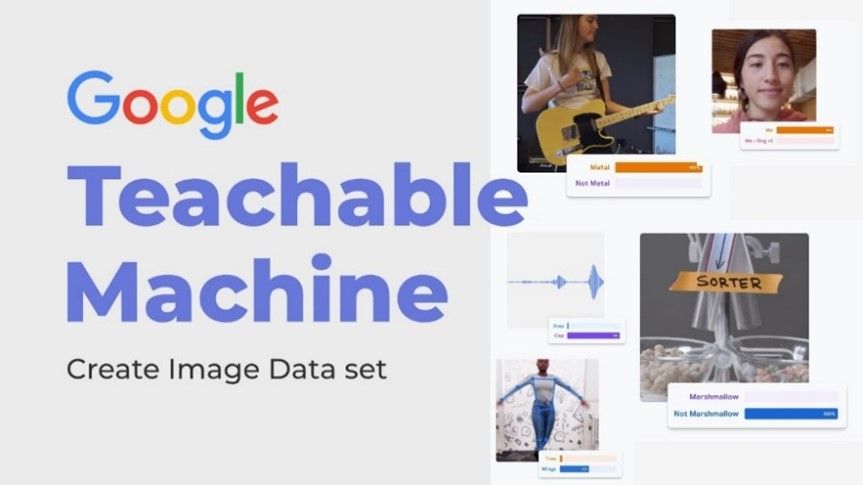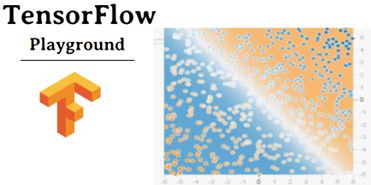What are some interactive games that teach machine learning?
Teachable Machine by Google

Description: Teachable Machine is a facile apparatus pioneered by Google that empowers individuals to customize and train their machine learning models using their data. Users can create image, sound, and pose recognition models without writing any code.
Features:
Features:
• Ease of Use: Designed for accessibility, users can easily upload their data and train models through a simple, intuitive interface.
• Real-Time Feedback: Provides instant feedback on the model's performance, allowing users to see results immediately.
• No Coding Requirement: Completely no-code, making it accessible to individuals without programming experience.
Learning Outcomes:
• Supervised Learning: Users learn the basics of supervised learning by labeling data and training models to recognize patterns.
• Classification: Understand how classification works by training models to categorize inputs into different classes.
AI Dungeon
Description: AI Dungeon is an engaging and fun game with a storyline created with the help of the fantastic GPT-3 model. Thanks to players' input, such captivating stories are created that define them and master every detail of every plot. Players lead the narrative anywhere they like and thus are offered a distinctive and unpredictable adventure.
Features:
Features:
- Creative Aspect: Promotes creativity by allowing players to interact with the AI to craft their own stories.
- Showcase of NLP: Demonstrates the capabilities of natural language processing (NLP) by understanding and generating human-like text.
Learning Outcomes:
- Basics of NLP: Players understand how NLP works through interactions with the AI.
- Language Models: Learn how language models generate coherent and contextually relevant text.
Rock, Paper, Scissors AI (RPS AI)
Description: In the instance of RPS AI, the player bets against a computer-controlled opponent, and the AI learns how to counter the player’s moves using machine learning. The AI's first impression is somewhat random, but in the end, the AI learns the player's pattern and works on a different algorithm. This is a way of showing how one can teach AI through information over time and eventually modify its behavior based on that information.
Learning Objectives
- Pattern recognition: The AI learns from the player's behavior, demonstrating how machine learning models detect patterns and adjust their actions based on what they’ve learned.
- Adapting strategies: Players see firsthand how the AI changes its approach over time, showing how adaptive learning works in AI systems.
- Interactive learning: By playing multiple rounds, users observe how AI collects data in real time and continuously refines its responses based on that data.
Features
- Simple gameplay and deep learning: While the game is based on the familiar rules of Rock, Paper, and Scissors, the AI’s ability to adapt introduces an element of machine learning, making it a simple but powerful demonstration of AI in action.
- Real-time feedback: The AI learns and responds in real-time, allowing players to witness the machine's learning process as they play.
- Pattern-based strategy: As players recognize the AI’s evolving strategy, they are encouraged to change their approach, making the game dynamic between human intuition and machine learning.
CodeMonkey AI
Description: In CodeMonkey AI, students help a monkey navigate through intricate mazes by implementing code and using AI strategies such as decision-making and pathfinding. The game, however, uses a very interactive, straightforward design appropriate for novices, making it easy and enjoyable to learn coding without any pressure. As students begin learning in a simple manner, they later solve tougher problems, learning by solving them.
Learning Objectives
Learning Objectives
- Introducing coding fundamentals: Students learn the basics of coding, such as commands, loops, and conditionals, as they write code to control the monkey’s movements.
- Exploring AI algorithms: The game introduces students to core AI principles, such as pathfinding and decision-making, in a visual and hands-on manner.
- Problem-solving and logic: Each maze requires students to think critically and solve problems by developing practical algorithms that guide the monkey to its goal.
Features
- Game-based learning: The platform’s game-like environment keeps younger students engaged, making learning to code enjoyable and motivating.
- Interactive AI challenges: Students are tasked with solving puzzles using AI-driven strategies, helping them understand how machines learn to navigate and make decisions.
- Progressive difficulty: The platform gradually introduces coding concepts, allowing students to build knowledge through increasingly complex levels.
- Visual coding interface: The interface is designed to be visually intuitive, helping younger students grasp coding concepts without being overwhelmed by technical jargon.
Quick, Draw! (Google)
Description: In Quick, Draw! Users take the in-game challenge to draw the given items for a given time; for example, draw a cat or bicycle, and an AI tries to guess the object based on what it has been trained on. The AI gets better after every player’s guess as it investigates all the players’ drawings across the globe. The game turns out to be an exciting method of training Artificial Intelligence by using the players’ drawings, and it clearly shows how the machines process pictures.
Learning Objectives
Learning Objectives
- Teach how AI interprets visual data: Players get a glimpse of how machine learning models recognize and classify images based on previous data.
- Demonstrate AI training in action: By playing, users contribute to training the AI, as the system continually improves its recognition abilities by learning from their drawings.
- Foster creativity under pressure: The time limit encourages fast thinking and creativity, challenging players to simplify their ideas into quick sketches.
Features - Real-time AI guesses: The AI responds in real-time, guessing what the player is drawing as they sketch, adding to the fun and urgency of the game.
- Massive drawing dataset: Behind the scenes, the AI uses millions of doodles collected from other players, creating a collaborative learning experience showcasing big data's power.
- Fast-paced gameplay: Each round lasts only a few seconds, so the game is designed to be quick and addictive. Players are often eager to see how well the AI guesses their sketches.
- Global learning tool: The game is also a crowd-sourced project. Every player’s drawing helps improve Google's AI, making it brighter and more accurate.
What are some online activities that teach machine learning concepts interactively?

TensorFlow Playground
Description: TensorFlow Playground is an experimental framework useful for simulating neural networks. This tool helps the user understand the theory and provides them with an opportunity to test the effect of changing a certain parameter on the neural network's performance.
Features:
Features:
- Parameter Tweaking: Users can adjust parameters such as the number of hidden layers, neurons per layer, activation functions, and learning rates.
- Real-Time Visualization: Changes are visualized in real-time, showing how adjustments impact the network's decision boundary and performance on the dataset.
Learning Outcomes:
- Neural Network Architecture: Users learn about the structure and components of neural networks.
- Activation Functions: Understand the role and effect of different activation functions.
- Overfitting: Gain insights into overfitting and how model complexity can impact performance.
AI Experiments by Google
Description: AI Experiments by Google is a collection of AI-powered interactive experiments designed to showcase the potential and creativity of artificial intelligence. These experiments are accessible and provide a playful way to explore AI concepts.
Features:
Features:
- Diverse Experiments: This section includes a variety of experiments, such as Quick, Draw!, which uses AI to guess what users are drawing in real-time.
- User-Friendly Interface: Designed to be engaging and easy to use, making AI concepts approachable for everyone.
Learning Outcomes: - AI Capabilities: Users can see firsthand what AI can do, from recognizing drawings to generating music.
- AI Limitations: Users also learn about AI technology's current limitations and challenges through interactive play.


